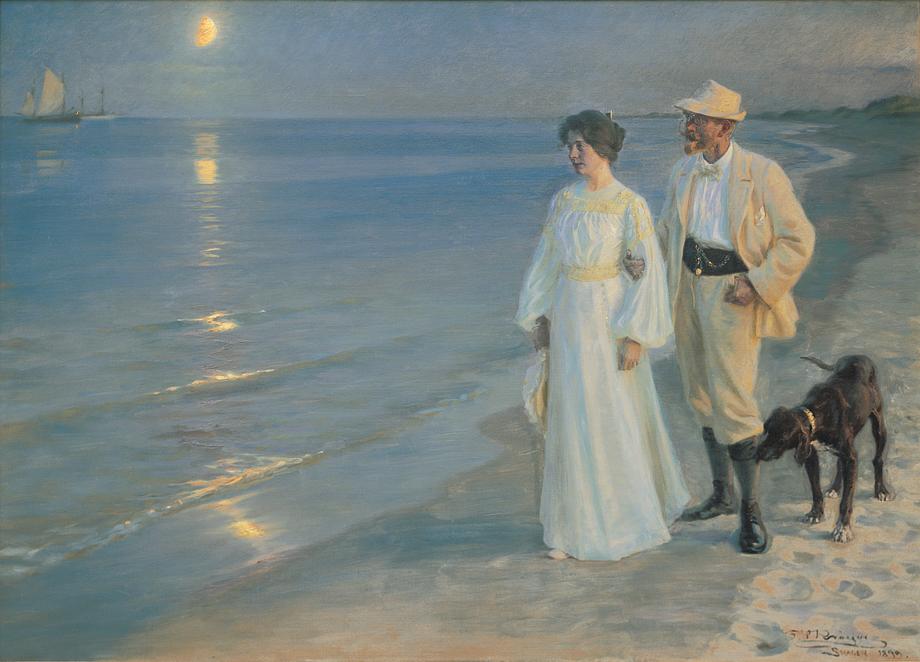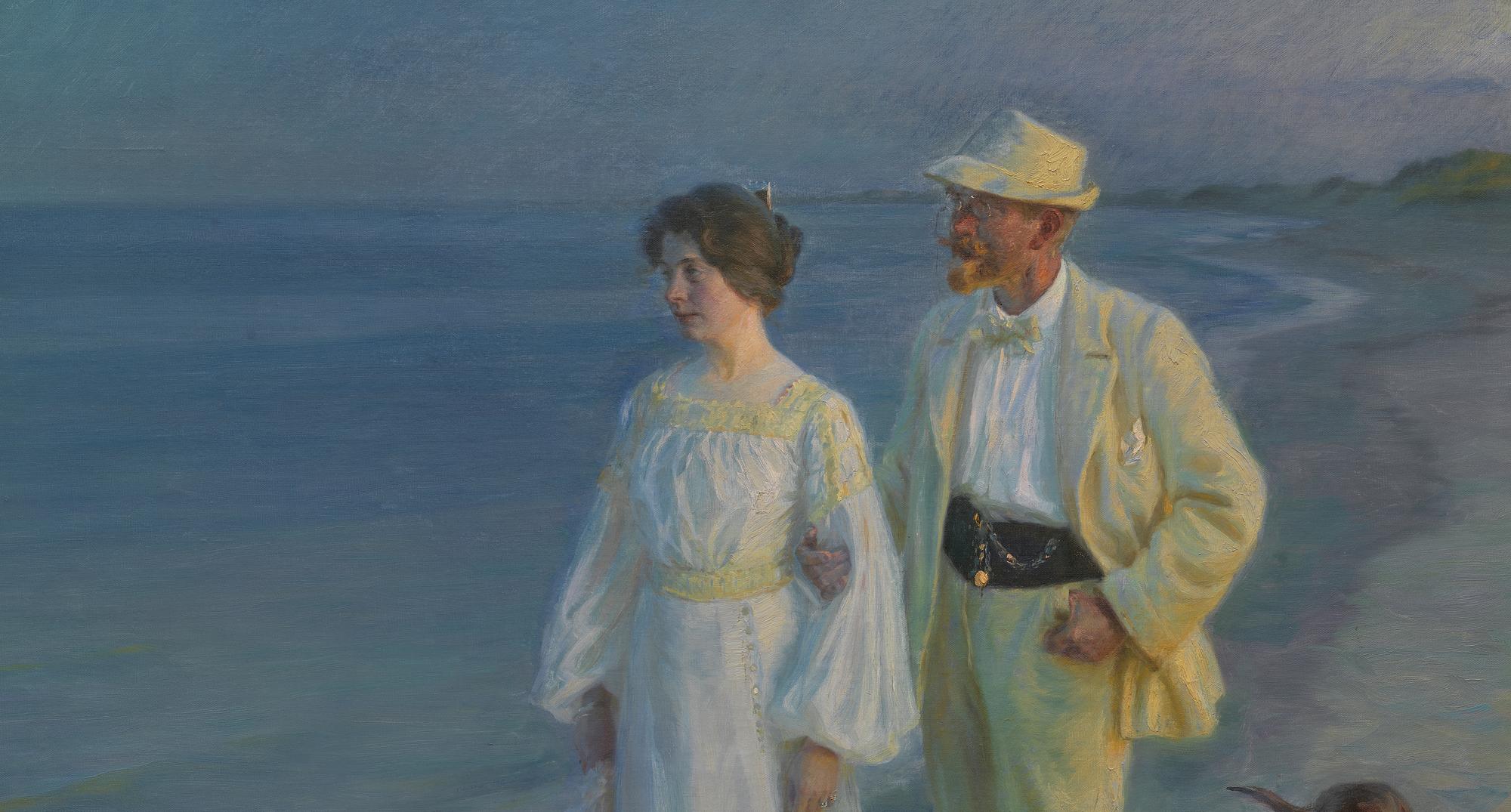
P.S. Krøyer
The story of an artist and his patron
P.S. Krøyer plays a special part in the collection and history of the museum. The founder of the Hirschsprung Collection, the tobacco manufacturer and art collector Heinrich Hirschsprung and his family, knew Krøyer back when he was a very young artist. A lifelong friendship was forged, and this is why the Hirschsprung Collection now houses the largest collection of Krøyer’s works outside of Skagen. The collection includes everything from paintings, drawings and sketchbooks to the artist’s personal property and letters.
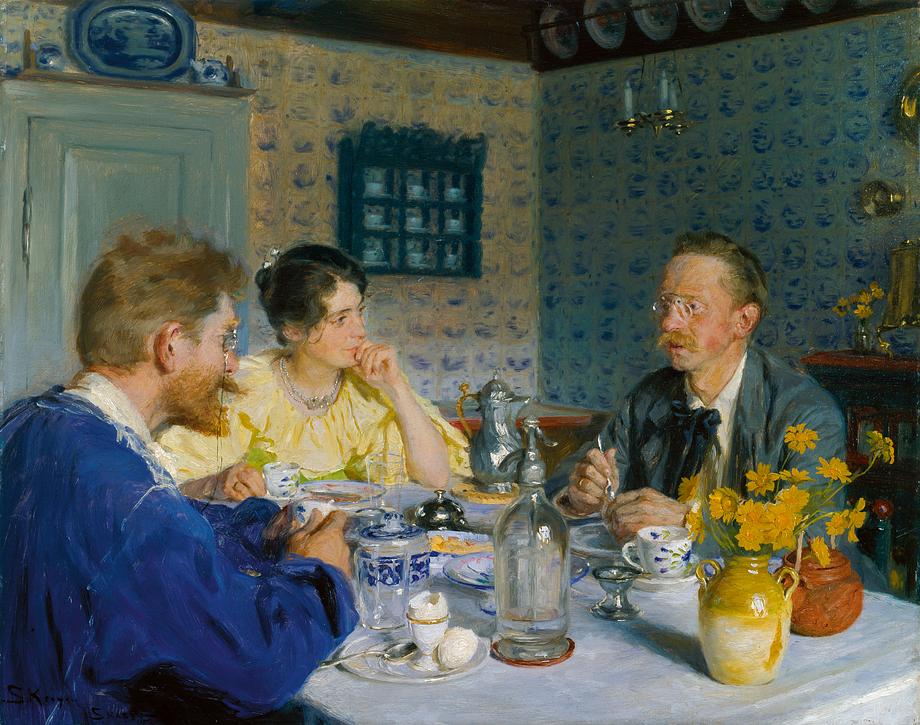
The artist and the patron
As soon as 1874, two years after P.S. Krøyer had his debut at the leading juried exhibition venue at the time, Charlottenborg, Heinrich Hirschsprung acquired his first works by the 23-year-old artist: four watercolour portraits of fishermen, painted the year before. It is likely that Hirschsprung had become acquainted with the talented young artist through the academy professor Frederik Vermehren, who had been a regular visitor to the Hirschsprungs’ home since the 1860s and taught Krøyer at the Copenhagen art academy. Krøyer soon became part of the group of artists, writers and musicians who gathered in the Hirschsprung family home on Højbro Plads and in their summer home outside the city.
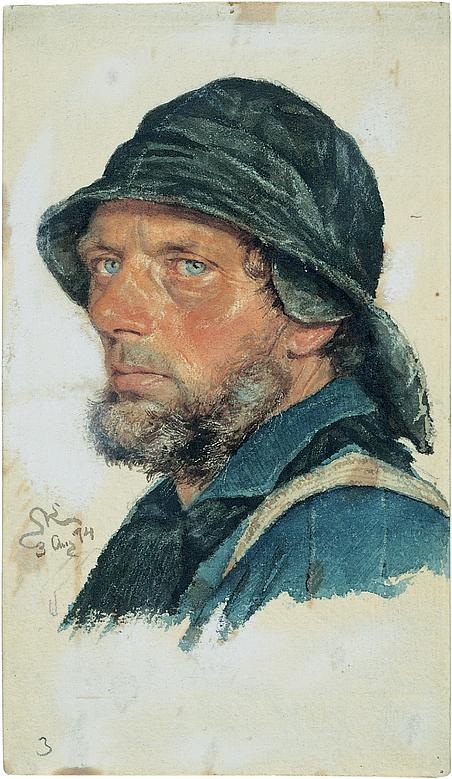
In 1877, Krøyer received the art academy’s two-year travel grant. Hirschsprung was keen to see young talent seeking new inspiration and insight abroad, where the art scene was more experimental than in Denmark. With added financial aid from Hirschsprung, Krøyer managed to travel for no less than four years, up until 1881. His travels took him to France, Spain and Italy, and his time under southern skies can be followed in the letters exchanged between Krøyer and Pauline and Heinrich Hirschsprung; these letters are now housed in the museum’s archives. The friendship between artist and patrons lasted more than thirty years, right up until the death of Heinrich Hirschsprung in 1908 and of Krøyer in 1909.
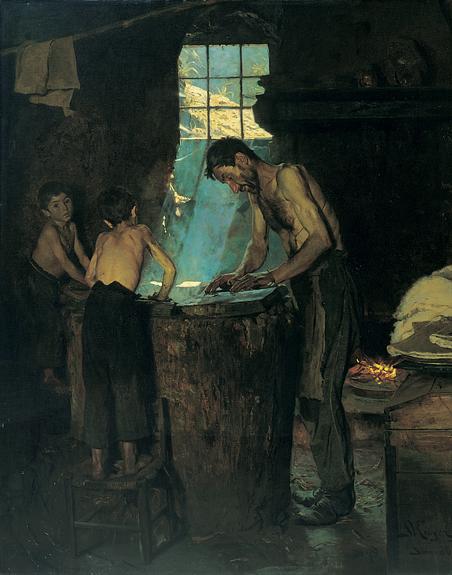
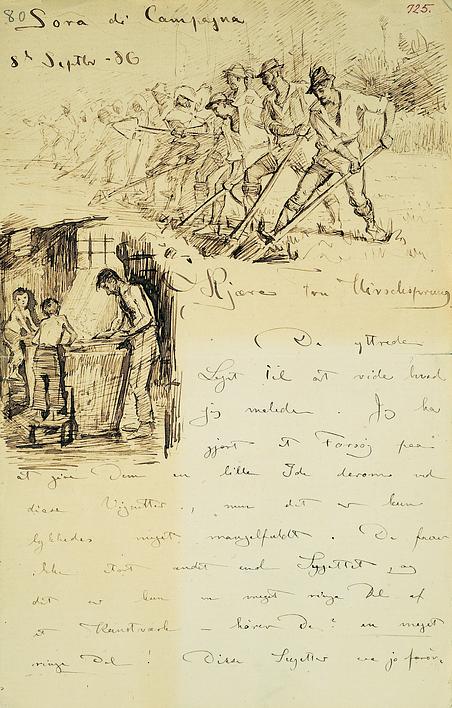
From Paris to Skagen
Krøyer’s time in Paris, where he studied under the French painter Léon Bonnat for two years, would have a major impact on his art. He began to depict the toil of everyday life in works such as Italian Village Hatters from 1880, which won the prestigious exhibition medal at the Paris Salon. Upon his return to Denmark, Krøyer set out for Skagen in 1882. Since the 1870s, fellow artists from Denmark and abroad had flocked to this northernmost part of Denmark, forming an artists’ colony there. This visit became the starting point of a lifelong association with Skagen, where he would live for long stretches of time, including with his wife, the artist Marie Krøyer, whom he married in 1889. The Hirschsprung Collection own some of Krøyer’s major masterpieces from his time in Skagen.
